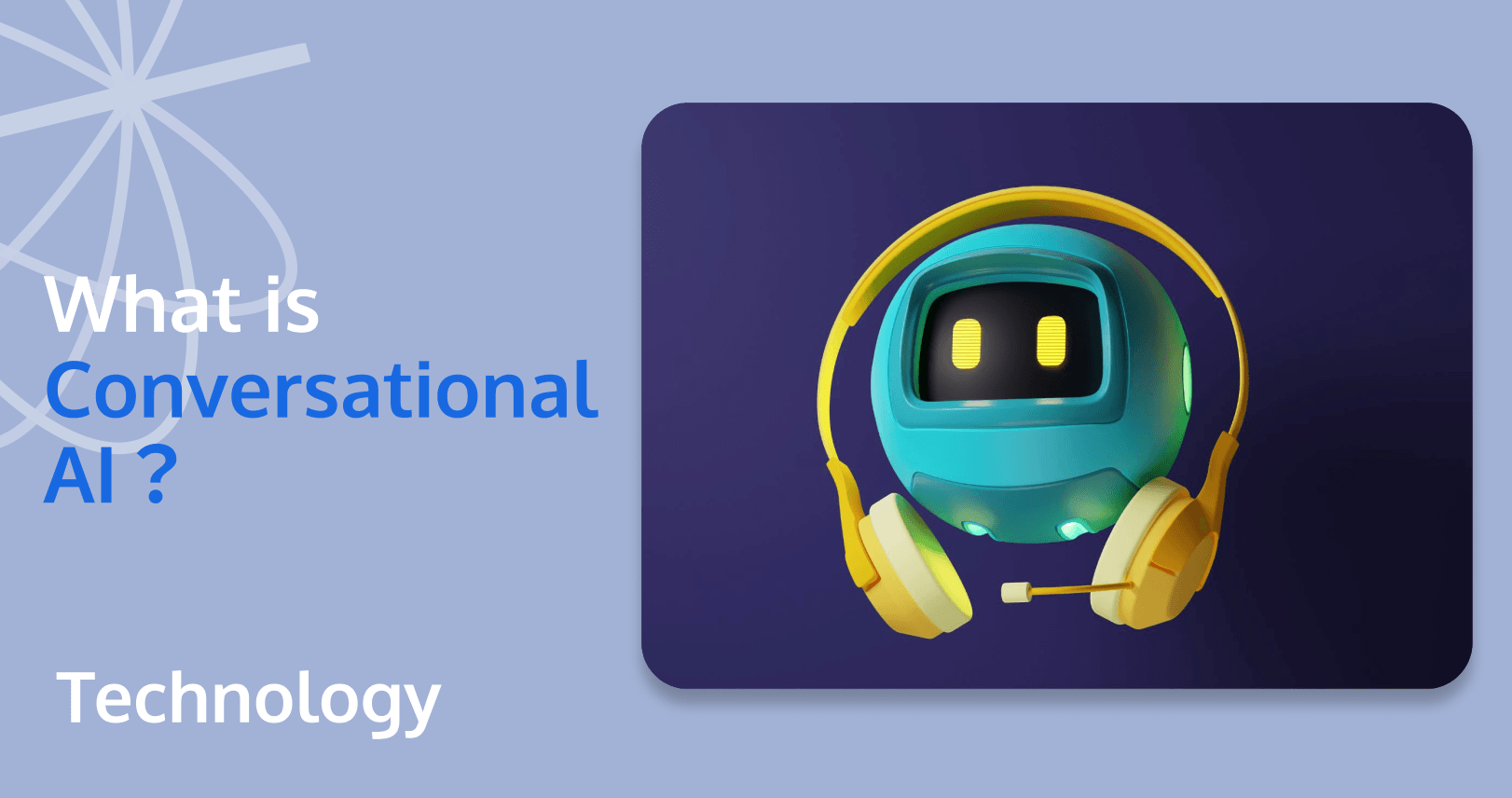
Conversational AI is giving online businesses a good boost in sales and customer satisfaction. Offering a sophisticated blend of natural language processing (NLP), machine learning, and speech recognition, this technology enables machines to engage in human-like dialogues.
Allow us to help you understand conversational AI on a deeper level. This post will give you its advantages and practical applications so that you leverage such technology effectively.
What is Conversational AI?
Conversational AI refers to a set of technologies that enable machines to engage in human-like interactions. These may be through spoken or written dialogue.
Conversational AI also encompasses many systems that can facilitate seamless communication between humans and computers. This technology harnesses Natual Language Processing (NLP), machine learning, and sometimes speech recognition. All of these work together to create intelligent, interactive experiences.
Conversational AI is not limited to chatbots but includes various systems that can understand and generate human language. The mentioned systems are utilized across multiple domains. These may consist of virtual assistants, customer service representatives, and complex enterprise solutions, to name a few. They are designed to handle diverse interaction scenarios, providing responses and solutions in a manner that feels natural and engaging.
Below are some conversational AI examples:
- Siri from Apple
- Uber chatbots
- Erica of Bank of America
- Alexa of Amazon

How Does Conversational AI Work?
For a conversational AI to work, it combines a few principles related to technologies:
Natural Language Processing (NLP)
The NLP is a core component of conversational AI. It involves several processes to enable machines to understand and generate human language. The processes could include:
- Text Analysis: This involves parsing text to understand its grammatical structure and meaning.
- Entity Recognition: Identifying key elements within the text, such as names, dates, or locations.
- Intent Recognition: Determining the user's purpose behind a query or statement.
Through NLP, conversational AI can process and interpret user inputs. NLP enables conversational AI to facilitate more accurate and contextually relevant responses.
Machine Learning (ML)
ML plays a crucial role in enhancing the capabilities of conversational AI. The ML algorithms analyze large volumes of interaction data to:
- Improve Accuracy: Refine the system’s ability to understand and respond to user inputs over time.
- Personalize Responses: Tailor interactions based on user history and preferences.
This continuous learning process helps conversational AI adapt to new contexts and improve its performance.
Speech Recognition and Synthesis
This principle converts spoken language into text, allowing users to interact with AI systems via voice commands. Speech synthesis, on the other hand, generates spoken responses based on text. Taken together, these technologies enable voice-based interactions. Thus, conversational AI becomes accessible and versatile across different platforms.
Dialog Management
Dialog management is responsible for managing the flow of conversations in a chat app. Its vital role includes maintaining context, handling multiple turns of dialogue, and providing coherent and relevant responses. Effective dialog management is essential for creating engaging and user-friendly interactions.
What are The Advantages of Conversational AI?
Conversational AI has received wide reception from various industries, due to the several benefits it brings.
Enhanced User Experience
Conversational AI significantly improves user experience by facilitating natural, intuitive interactions. Users can engage with systems using everyday language. Due to this advantage, technology has become more accessible and user-friendly.
24/7 Availability
Another recognized advantage of conversational AI is its ability to operate around the clock. The continuous availability ensures that users can receive assistance and support from a reliable chat application. The outcome is an enhanced customer service and satisfaction.
Cost Efficiency
Implementing conversational AI can lead to cost savings. This is because it can automate routine tasks and handle high volumes of interactions without human intervention.
Scalability
Conversational AI systems can handle large volumes of interactions simultaneously. This feature makes conversational AI highly scalable. Thanks to this feature conversational AI is particularly useful for businesses and organizations that need to manage fluctuating traffic.
Personalization
Advanced conversational AI systems can offer personalized interactions. Their ability to analyze user data and previous interactions makes this happen. This personalization can improve the relevance of responses and recommendations, leading to a more tailored user experience.
How to Create Conversational AI
To successfully create a chat system, powered by a conversational AI, here are some tips to follow:
Identify User Needs via Frequently Asked Questions (FAQs)
The foundation of the best conversational AI is understanding your users' needs. This is achieved by compiling a list of frequently asked questions (FAQs). This step will help you identify the primary concerns of your clientele.
For example, if you are developing a conversational AI for a medical practice or hospital, your initial list of FAQs might include:
- How can I schedule an appointment with a doctor?
- What should I do if I need to cancel or reschedule my appointment?
- How can I access my medical records online?
- What are the symptoms of [specific condition]?
- How can I get a prescription refill?
- Where is the nearest urgent care center?
- What insurance plans do you accept?
Define Goals and Intents
Upon producing a list of possible FAQs, goals or intents need to be defined. These are the specific actions or pieces of information users are seeking. For example, intents for a medical conversational AI might include “schedule appointment,” “cancel appointment,” and “request a prescription refill.”
Develop Entities
Entities help the system understand and extract pieces of information from user inputs. For a medical conversational AI, entities might include:
- Appointment type (e.g., general consultation, specialist visit)
- Date and time
- Patient name
- Prescription details
Build A Meaningful Dialogue Flow
With intents and entities now clearly defined, you can create a coherent dialogue flow. In this step, you should design how the conversational AI interacts with users according to their inputs.
Here’s an example of how a conversation might proceed:
Conversational AI: “Hello there. How can we help you today?”
User: “I need to schedule an appointment with Dr. Smith.”
Conversational AI: “That’s great. We just need a couple of details so our team can follow up with you. First, what’s your name?”
User: “Alan.”
Conversational AI: “That’s a nice name. Now, can we ask for your email so that we can get in touch with you?”
User: “alan2024@gmail.com”
Conversational AI: “Thank you for that. Now, what date and time would you prefer for your appointment?”
User: “Next Monday afternoon.”
Conversational AI: “Let me check Dr. Smith’s availability for next Monday afternoon. We’ll confirm the appointment time shortly via email.”
Test and Refine Your Conversational AI
Testing is crucial to ensure your conversational AI performs as expected. Conduct thorough testing to evaluate how well the system handles different scenarios and user inputs. Gather feedback from users and analyze performance data to identify areas for improvement.
Deploy and Monitor
Once testing is complete, deploy your conversational AI system in the desired environment. Continuously monitor its performance to ensure it meets user expectations. Use analytics tools to track interactions and make data-driven improvements.
Tencent RTC Chat API Makes a Difference
Elevate your communication strategy with Tencent RTC Chat API, a versatile platform designed to enhance real-time interactions with a host of powerful features.
Higher Engagement with Our Feature-Rich Chat
Tencent RTC offers a dynamic and immersive user experience with social features and diverse media types. Keep conversations active even when users are offline with offline push notifications. Our chat SDK and API simplify the creation of engaging chat and instant messaging applications.
Improve User Retention
Manage conversations and groups effortlessly with our advanced tools. Tencent RTC supports super large groups of up to 1 million members and a variety of group types, including work, public, meeting, audio-video, and community groups.
Easy to Integrate
Build your own chat app in just one day with our multi-platform chat APIs, server-side APIs, webhooks, and UIkit components. Our platform makes integration seamless and efficient.
Ready to transform your communication experience? Start a free trial of Tencent RTC Conversational AI today and explore the future of interactive messaging. For more information, visit the Tencent RTC Chat Product Page.
Conversational AI Cases
Due to its versatility and innovation, conversational AI has been used in various industries. Below are some use cases for conversational AI:
Healthcare
Conversational AI in healthcare helps with medical scheduling by allowing patients to book appointments. Managing their paperwork and streamlining the administrative processes efficiently are some added assistance of a healthcare chat app.
Customer Service
In customer service, conversational AI enhances the customer experience by automating support:
- Booking travels
- Handling billing inquiries
- Managing complaints
- Answering inquiries
- Etc.
Retail
Conversational AI is revolutionizing retail by offering personalized product recommendations. The AI also helps handle multi-channel customer interactions. You can even use it to aid in inventory tracking and provide valuable insights into customer data.
Finance and Banking
For this sector, an efficient conversational AI assists with checking balances, processing transactions, and detecting fraudulent activities through voice recognition.
Real State
Conversational AI improves real estate operations by automating lead generation. The responsive chat app can also manage initial conversations. It is also capable of filtering potential customers and streamlines the process of identifying and nurturing leads.
Sales and Marketing
In sales and marketing, Conversational AI drives conversions. How? It interacts with customers through conversational marketing strategies and self-service options.
Conclusion
Conversational AI is a powerful tool that revolutionizes customer and user experience across several fields. By offering a wide range of applications, conversational AI helps businesses enhance user experiences, streamline operations, and gain a competitive edge. Building a reliable and responsive chat responding system will help business owners stay ahead of the game.
FAQs
What challenges does conversational AI technology need to face?
Although an AI conversation has advanced features, it is still not exempt from experiencing challenges. Here are some of them:
- Understanding context and nuance
- Handling ambiguity
- Managing human-like expectations
What is the difference between chatbots and conversational AI?
Traditionally, chatbots are rule-based systems designed to respond to specific commands or queries based on pre-defined scripts. Conversational AI encompasses a broader range of technologies. It is capable of utilizing advanced natural language processing (NLP) and machine learning. Unlike simple chatbots, conversational AI systems can understand and generate more complex responses.
If you have any questions or need assistance online, our support team is always ready to help. Please feel free to Contact us or join us on Telegram or Discord. For technical problems, you can also get help directly from developers on Stack Overflow.


